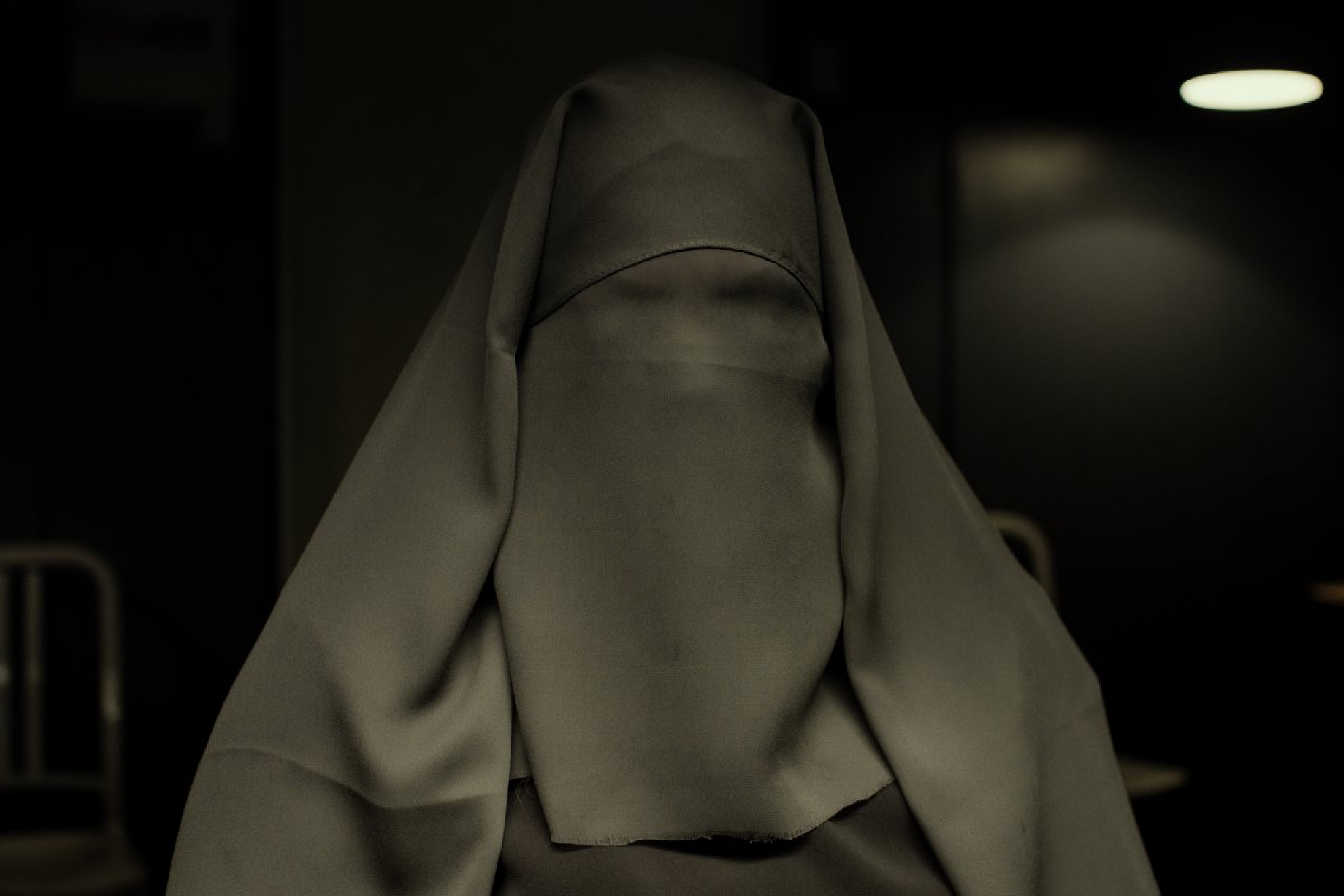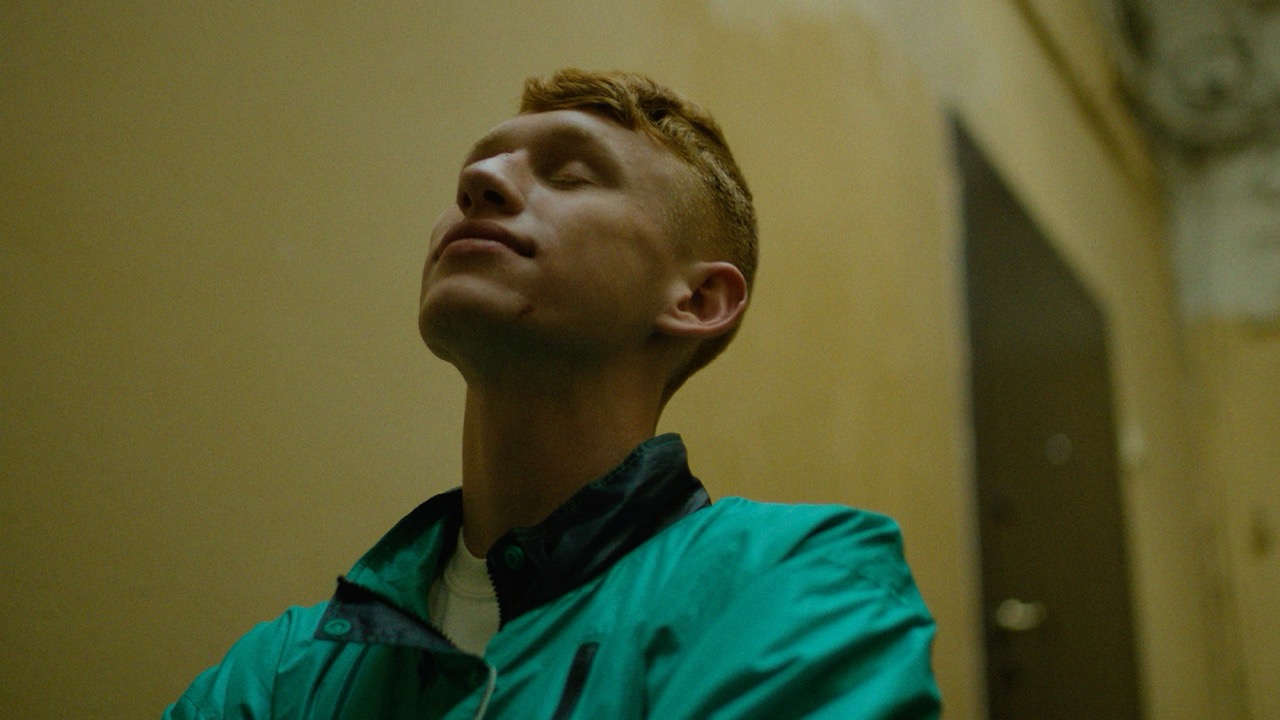Film Analysis & Review
Exam begins in total normalcy — a teenager, a kitchen, a school bag, a rushed morning. But from the first frame, something feels off. The camera is slightly too close, the lighting too cool, the air too still. Sonia K. Hadad doesn’t wait for tension to arrive. It’s already in the room, quietly layered into the frame.
What distinguishes Exam from most films about pressure is that it doesn’t reach for melodrama. There is no shouting. No overt conflict. Instead, there is an increasing tightness. The girl’s environment — her home, her street, her school — becomes a map of quiet threats. Every corridor she enters, every adult who looks at her bag, every classroom she walks into holds the possibility of unraveling.
The camera is tightly controlled. It floats behind her, then suddenly stops. It moves in when she wants to breathe and pulls away when she needs someone close. The handheld style is restrained, never chaotic. We are always with her, but never quite ahead of her. This decision — to let the viewer hover in that uneasy middle ground — is what creates the film’s deep sense of dread.
The tension peaks in a bag search sequence that feels almost unbearable in its pacing. Hadad stages it like a slow-motion disaster. There are no sharp edits. No quick cuts. Just silence, glances, breath. The teacher moves closer. The girl steadies her hands. The classroom around her continues as if nothing is happening. This juxtaposition — private panic beneath public order — is where the film becomes more than a thriller. It becomes a portrait of power, shame, and survival.
Sadaf Asgari gives an exceptional performance. She barely speaks, yet her entire presence communicates internal collapse. She doesn’t perform fear in the traditional sense. She compresses it. She lets it live under her skin. Watching her is watching someone try to stay invisible while knowing everyone is looking at her.
Hadad is not interested in explaining the story’s politics or expanding the narrative into larger commentary. That is what gives the film its force. She trusts the audience to feel what is missing — the unspoken risks, the weight of the state, the inherited fear of being a girl carrying something forbidden in a system that is always watching.
By the end of the film, nothing is resolved. The girl finishes her exam, returns to her seat, and the world continues. But inside her, and inside us, something has changed. What the film leaves behind is not closure but residue — the kind of quiet damage that does not announce itself but never really leaves.
Filmmaker Insight & Production Context
Sonia K. Hadad has described this film as deeply personal. Her starting point wasn’t the package or the drugs — it was the sensation of pressure. The suffocating culture of exams. The fear of disappointing a father. The claustrophobia of being a teenager with too little power and too much responsibility. The package became a metaphor for everything girls are asked to carry in silence.
Hadad’s creative process was focused on emotional accuracy. She wrote multiple drafts to strip the story down to its essentials. She chose not to add backstory or flashbacks. She deliberately excluded explanations about the family, the father, or the recipient of the package. Everything is rooted in the present moment. She has said that the story needed to feel like a breath held too long — and that’s exactly what it becomes.
Production-wise, the film was shot in Tehran with a small, efficient crew. Much of the school was filmed in active hallways, with limited control over the environment. This was not a limitation — it was a strength. The ambient noise, the bustle, the off-timing of real-world interruptions all served the film’s naturalism.
Casting Sadaf Asgari was one of the most important decisions in the film. Hadad knew the role needed a performer who could endure the camera’s closeness and never break the illusion of internal life. Asgari doesn’t emote. She contains. The performance becomes a quiet architecture of defense — the physical act of hiding fear while knowing there is nowhere to run.
In the edit, Hadad focused on rhythm. She built the film like a wave that never breaks. Even the climax — the hiding, the near-reveal — is not allowed to explode. Instead it drops us into stillness, which is somehow worse. That silence, that return to order, is not relief. It is surrender. The girl is safe, but only because she has suppressed everything. That choice — to end not with escape, but with containment — is what gives Exam its lasting power.
For Filmmakers: Lessons from Exam
Tension does not require noise. It requires stillness.
Silence can be louder than conflict when carefully composed.
Performance is not expression but compression.
School settings can be weaponized cinematically to reflect societal control.
Avoid over-explanation. Let action and consequence speak.
Endings that do not resolve can still conclude with force.
Verdict
Exam is a masterclass in narrative pressure. In fifteen minutes, it shows us how danger can live in silence, how power is enforced through routine, and how a single morning can shape the way a girl survives the world. It is precise, unsparing, and deeply affecting. It does not ask to be admired. It dares you to feel what it hides.
⭐ Curated Shorts Pick
Unflinching exact visceral






.jpeg)













.jpg)